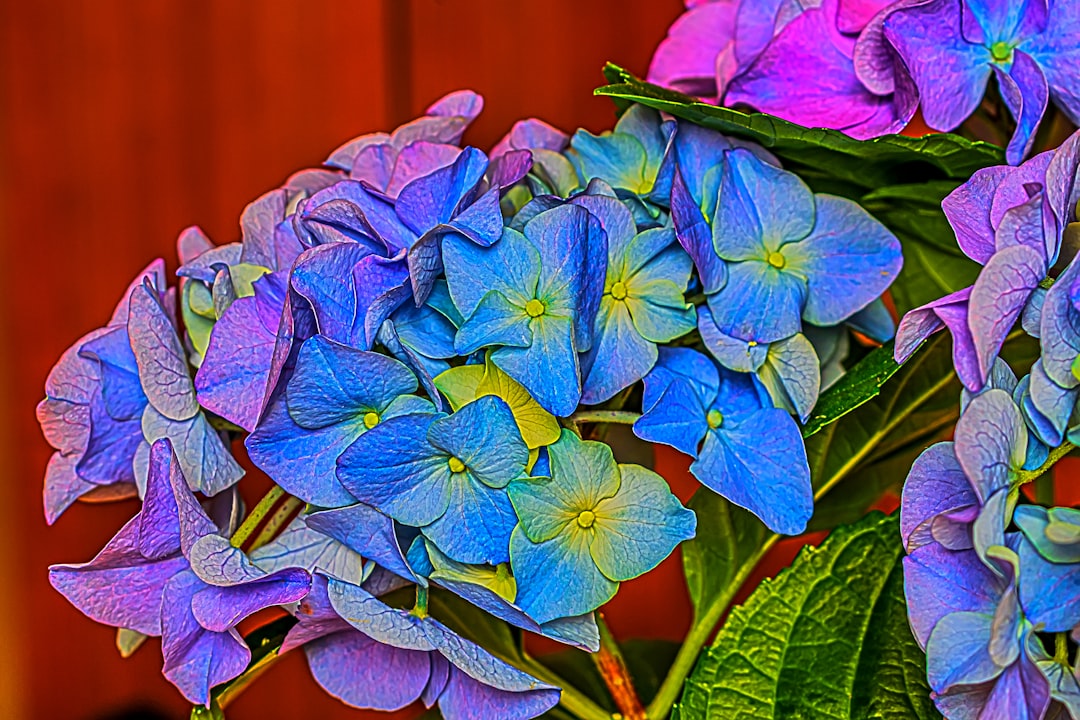Online Photo Colorization A User Guide
Online Photo Colorization A User Guide - Accessing the colorizethis.io service
Initiating use of the colorizethis.io platform typically involves a simple online procedure. This service aims to convert monochrome images into color visuals using artificial intelligence. The underlying system reportedly employs sophisticated algorithms developed from extensive image analysis, facilitating a relatively quick transformation once a photo is submitted. Users generally find the process manageable, involving photo uploads and subsequent retrieval of the altered image. However, the effectiveness of the colorization can be inconsistent, often depending on the clarity and subject matter of the initial black and white picture. Ultimately, it offers a readily available method for individuals seeking to add color to historical or personal photographs.
When initiating interaction with the colorizethis.io platform, the process of simply "accessing" and submitting a task involves several fascinating technical handshakes. Delving into how this works from a systems perspective reveals some interesting aspects of modern online service delivery.
1. One notable consideration is the management of high-performance computing resources like GPUs. Rather than maintaining expensive hardware at peak readiness for every potential user, the system likely orchestrates dynamic allocation. Your access request might trigger the provisioning or assignment of processing power specifically for that task, scaling resources on demand rather than letting them sit idle. This introduces complexity in resource scheduling but aims for operational efficiency.
2. The architecture is presumably built to withstand concurrent access from a potentially massive global user base. Handling myriad simultaneous requests requires a sophisticated orchestration layer capable of distributing computational workload across numerous servers or service instances, ensuring that each incoming task is queued, routed, and processed without overwhelming any single component.
3. Upon successful upload, the source image data, which could be substantial, is likely staged in very high-speed memory – specifically volatile RAM on the processing server. This is a common pattern for computationally intensive tasks where disk I/O would create a bottleneck, prioritizing rapid access for the core processing algorithms over persistent storage at this initial stage.
4. Your initial connection request probably doesn't hit the core processing engine directly. It's more likely intercepted by an API Gateway or similar edge service. This component acts as a sophisticated traffic manager, handling authentication, rate limiting, and routing the request to the appropriate backend service while shielding the internal service structure from direct public exposure – a standard, yet critical, piece of the puzzle.
5. Finally, the perceived speed of 'accessing' and beginning the colorization process is inherently tied to the efficiency of the data transfer itself. How your web browser packages and transmits the image file, including any client-side compression techniques employed, significantly impacts how quickly the server receives the necessary input to even start the processing pipeline. Network conditions, of course, play a crucial role too.
Online Photo Colorization A User Guide - Submitting a black and white photo
Getting your black and white image ready for an online colorization service typically follows a straightforward path. This involves simply uploading your chosen monochrome picture directly through the service's interface. Once the image is sent over, the system, powered by artificial intelligence, takes over to process the visual information and attempt to predict and apply color across the photo. While the submission phase itself is usually quite simple, designed to be accessible even without technical expertise, the final outcome after automatic color application can still be a bit unpredictable. The quality and complexity of the original image often influence the result, and the automatically generated colors might not always perfectly match expectations, potentially requiring manual adjustment if the platform provides those options. Nevertheless, this accessible process offers a way to view cherished old moments in a different light.
Here are a few observations about the characteristics of a black and white photo as input for online colorization systems like this:
1. That seemingly simple grayscale image holds more than just varying brightness; its specific tonal variations often encode subtle information about how light at different wavelengths was reflected from objects during capture. This underlying spectral signature, translated into shades of gray, provides the initial foundation the algorithm attempts to interpret for color prediction.
2. When the AI analyzes your black and white input, it's essentially making an educated statistical guess about the original colors. Based on vast datasets of paired grayscale and color images, it predicts the most statistically probable color for areas with particular grayscale values and surrounding contexts. The output isn't a factual restoration but rather the algorithm's best probabilistic reconstruction.
3. Modern camera sensors register minute differences in luminance that are often imperceptible to the unaided human eye. These incredibly fine tonal gradations within the grayscale image can act as critical cues for the AI model, which leverages these subtle distinctions to attempt a more nuanced prediction of original colors.
4. Adding complexity, the relationship between original color and recorded grayscale wasn't always linear, particularly with historical films and the use of filters. A red filter, for instance, would dramatically darken blues while potentially brightening reds, creating a grayscale representation that is non-standard. The AI tries, sometimes imperfectly, to infer and compensate for these complex mappings based on patterns it has learned from diverse training examples.
5. The colorization isn't a simple pixel-by-pixel lookup based on grayscale value alone. The AI employs a more sophisticated approach, analyzing clusters of pixels to recognize shapes, textures, and potential objects or scene elements. This contextual understanding – identifying something as potentially 'sky' or 'foliage' – heavily influences the predicted color applied to that area, even more so than the precise shade of gray in isolation.
Online Photo Colorization A User Guide - Reviewing the initial colorization output
Reviewing the initial colorization output remains a crucial step when utilising online AI tools for photo transformation. As we stand in mid-2025, the sophistication of algorithms has certainly advanced, leading to more convincing and detailed color applications directly after processing. However, the output is still a product of statistical inference based on training data, not perfect historical recall or understanding of personal context. Consequently, users frequently find the need to scrutinise the generated colours for accuracy, plausible appearance, or fidelity to their own memory or research, underscoring that even cutting-edge automation requires careful human oversight.
Here are a few fascinating points to consider when reviewing the colorization output from a service like colorizethis.io:
The resulting hues often reflect the statistical prevalence of colors in the training dataset more than specific spectral data from the original monochrome capture or historical context. This can lead to predictable, even generic, color choices that might lack nuance or deviate significantly from actual historical palettes.
Examine object edges and fine textures closely; the propagation of predicted color can sometimes fail to adhere cleanly to boundaries identified by the AI's feature detection layers, manifesting as noticeable fringing, soft bleeds, or small areas with incorrect color assignments within textured regions.
Pay attention to areas that should ideally be neutral or achromatic (whites, grays, blacks of truly grayscale objects). AI models frequently struggle to maintain true neutrality, often introducing subtle, sometimes pervasive, color casts due to biases or limitations in their learned representation of colorless values.
The perceived 'realism' of the output is heavily influenced by the AI's confidence score for a given prediction, which doesn't always correlate with human visual plausibility. This can result in highly saturated, seemingly confident colors in one area immediately adjacent to desaturated, hesitant-looking colors in another, creating an unnatural patchwork effect.
Consider how the model handles scenes lacking strong semantic cues or common objects (e.g., abstract patterns, complex machinery, unusual materials). Its reliance on recognizing learned features means it may struggle significantly or produce chaotic color output when presented with visual information outside its core training distribution.
Online Photo Colorization A User Guide - Obtaining the final color image
Retrieving the processed colorized image represents the terminal interaction with the service. This phase generally requires selecting an option to export or download the result via the online interface. The outcome is a digital image file capturing the AI's interpretation and application of color. The specific file format and any available quality settings provided by the platform will dictate the characteristics of this saved output, affecting aspects such as resolution and file size. Users should be mindful that the final downloaded artifact might present slight variations when compared to the on-screen preview displayed within the service interface.
Moving from reviewing the on-screen result to handling the actual digital file reveals several technical considerations regarding the state and nature of the final color image provided by such services.
Upon receiving the supposedly finished color image, one intriguing aspect from a signal processing perspective is the potential presence of what might be termed algorithmic 'fingerprints'. The highly specific sequence of operations and weight applications within a particular neural network model during inference can imprint subtle, non-random correlations or textures onto the pixel data. These aren't photographic noise but rather deterministic artifacts of the computational pipeline, sometimes allowing experts to infer which specific model architecture or even training methodology was employed, a fascinating byproduct of the processing.
Furthermore, the conversion to a standard output color space like sRGB introduces a practical limitation. While the AI's internal calculations might potentially operate with a wider spectral representation to distinguish fine color differences, the final delivered image is mapped into the relatively constrained sRGB gamut. This ensures compatibility with typical displays, but inherently compresses or clips some potentially nuanced hues the model might have inferred, reducing the observable color richness.
Concerning the image file itself, it's common to observe the removal of original photographic metadata during the finalization phase – ostensibly for user privacy or system hygiene. Conversely, some implementations might add new annotations, perhaps a simple flag indicating automated processing. This handling of digital provenance is inconsistent across services and could benefit from standardization; tracking the origin and processing history of AI-generated or modified media remains a developing challenge.
Technical precision versus pragmatic delivery becomes apparent in the typical bit depth of the output file. Although the underlying AI computations might utilize higher precision floating-point or 16-bit integer representations internally, the resulting image is almost universally downsampled to 8 bits per channel for distribution. While this drastically reduces file size and aligns with common display capabilities, it inevitably sacrifices the potential for smoother tonal transitions and subtle color variations that higher bit depth could preserve.
Finally, the delivered visual product is frequently subjected to lossy compression, most notably in the form of JPEG encoding. This final step discards what the algorithm deems perceptually less critical data to achieve smaller file sizes suitable for web transmission. However, this inherently introduces compression artifacts – those familiar blocks and color banding – meaning the image the user downloads isn't the exact pixel-for-pixel output of the AI model's core rendering, but rather a compressed approximation thereof.
More Posts from colorizethis.io:
- →The Rise of AI-Powered Background Removal in Online Photo Editing A 2024 Analysis
- →7 Key Differences Between AI-Powered and Traditional Online Photo Editors in 2024
- →7 Innovative Drawing Tools Revolutionizing Digital Art Creation in 2024
- →7 Free Online Tools for Creating Vibrant Photo Collages in 2024
- →AI Portrait Background Removal A Technical Comparison of 7 Free Online Tools in 2024
- →7 Free AI Image Generators That Don't Require Login or Registration in 2024

